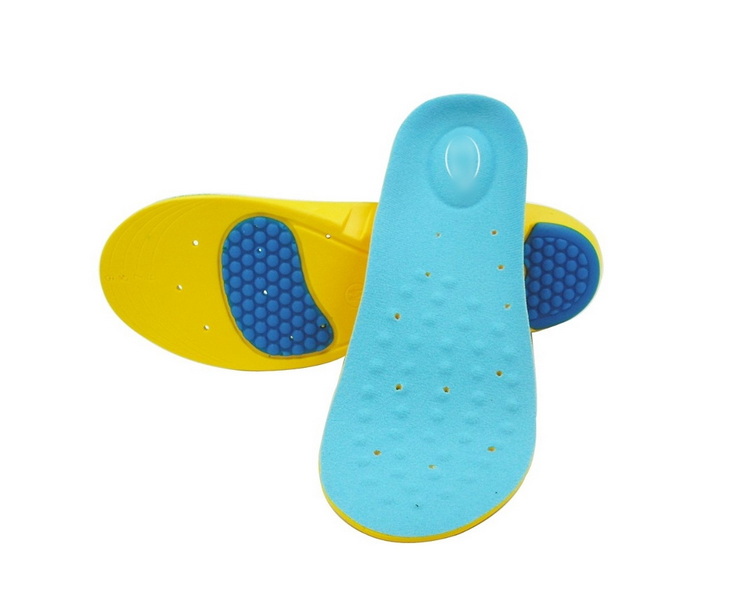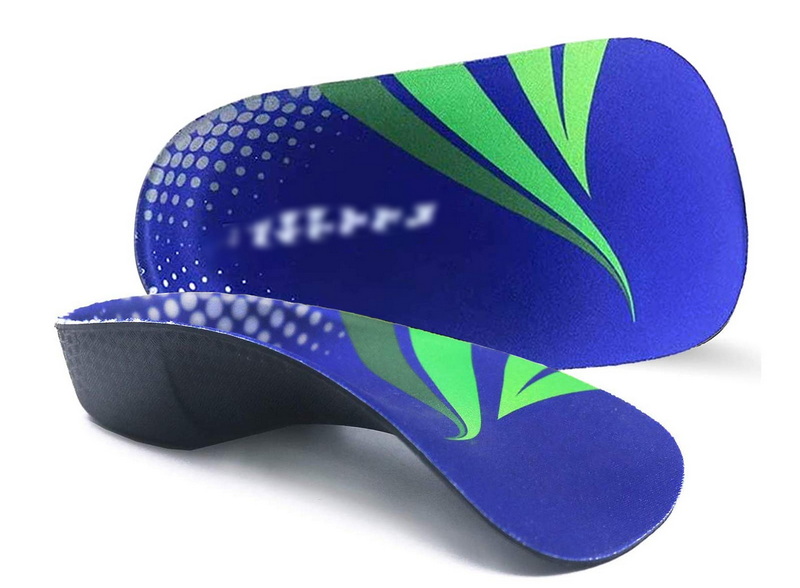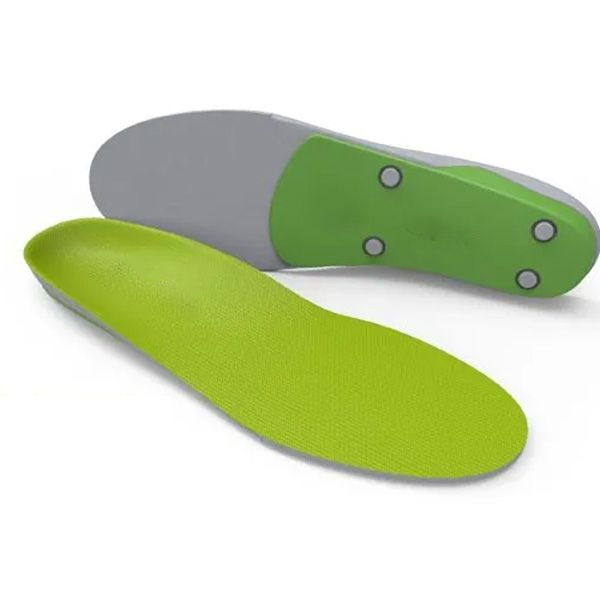Views: 222 Author: Edvo Publish Time: 2025-10-24 Origin: Site











Content Menu
● Understanding Insole Materials
>> Key Benefits of Foam Insoles
>> Key Benefits of Gel Insoles
● Foam vs Gel Insoles: Detailed Comparison
● Manufacturing Insights from China
>> The Typical Production Process
● OEM Advantages of Sourcing from China
● Choosing the Right Insole Material for Different Needs
>> For Professional or Heavy-Duty Footwear
>> For Orthopedic and Custom Footbeds
>> For Brand Development and OEM Projects
● Maintenance and Lifespan Tips
● Comfort Science: How Insoles Affect Body Alignment
● Global Market Trends and Innovation
● How End Users Can Choose Wisely
● Sustainability in Modern Insole Production
● FAQs
>> 1. Which lasts longer, foam or gel insoles?
>> 2. Can I mix foam and gel in one shoe?
>> 3. Are foam insoles washable?
>> 4. Do gel insoles help reduce knee pain?
>> 5. How do I know when to replace insoles?
Selecting the right type of insole is more than just a comfort choice — it's a key factor in foot health, posture, and overall well-being. Whether you're walking short distances, spending hours standing at work, or producing custom footwear for international markets, the decision between foam insoles carries practical and commercial significance.
Chinese EVA insole manufacturers have refined material technology over the last decade, producing both foam and gel variants with greater comfort, flexibility, and sustainability. This article explores both options in depth, compares their properties, and outlines how global brands can source customized insoles efficiently.

Insoles serve multiple purposes — they cushion each step, support the arch, distribute pressure evenly, and stabilize the heel. The two major materials used across the footwear industry are foam and gel. Both possess distinct advantages, and many high-end insoles use combinations of both materials to maximize performance.
Foam insoles typically consist of EVA (ethylene-vinyl acetate) or polyurethane foam. These lightweight materials compress under pressure and quickly rebound, providing consistent comfort for all-day use. Gel insoles, in contrast, use a dense thermoplastic elastomer or silicone layer that offers firm resistance and active shock absorption during walking or running.
When choosing between them, key factors include durability, breathability, weight, structure, and manufacturing cost. Understanding these can help identify the best solution for personal wear or market-oriented OEM production.
Foam insoles are valued for their balance between softness, responsiveness, and affordability. They mold gently to the shape of your foot, evenly distributing pressure while maintaining flexibility.
- Excellent cushioning performance: Foam layers provide dynamic responsiveness during running, walking, or standing.
- Breathability and moisture control: The porous structure allows airflow, reducing odor and sweat accumulation.
- Lightweight construction: Keeps shoes comfortable even for extended wear.
- Customizable hardness and density: EVA material can be adjusted to meet specific orthopedic or industrial needs.
Foam insoles are highly suitable for:
- Casual lifestyle and school shoes
- Running or training footwear
- Orthopedic correction products
- Mass-produced shoe lines with high comfort expectations
For manufacturers, foam is easy to shape, cut, and laminate with fabrics or antimicrobial coatings. Its affordability makes it a leading choice for large-scale production and OEM customization projects.
Gel insoles rely on advanced polymer materials that maintain elasticity under high pressure. The gel shifts slightly during movement, redistributing body weight to relieve stress points on the heel and arch.
- Outstanding impact protection for high-intensity activities.
- Stable support that resists deformation even after prolonged use.
- Enhanced weight distribution, minimizing fatigue.
- Durability that extends the lifespan of footwear.
- Cooling effect, especially beneficial in hot environments.
Gel insoles are recommended for:
- Sports like basketball, running, or hiking
- Industrial and safety footwear
- Jobs requiring long hours of standing such as nursing, logistics, or hospitality
- People with chronic foot pain or plantar fasciitis
The structural firmness and long-lived cushioning of gel make it preferred in professional and athletic markets where performance is critical.
| Feature | Foam Insoles | Gel Insoles |
|---|---|---|
| Comfort Level | Soft, adaptive | Firm, supportive |
| Weight | Lighter | Slightly heavier |
| Durability | Medium | High |
| Breathability | Superior ventilation | Moderate ventilation |
| Shock Absorption | Good | Excellent |
| Cost Efficiency | Lower | Higher |
| Maintenance | Easier to clean | Requires more care |
| Best Use | Daily comfort | Long-term support and protection |
While foam wins in softness and breathability, gel surpasses it in stability and lifespan. The choice often depends on activity level, footwear design, and brand objectives.
To capture the strengths of both materials, manufacturers increasingly produce hybrid insoles that feature foam bases with strategically placed gel pods around stress zones such as the heel or forefoot. This combination allows energy return where it's most needed while maintaining flexibility and ventilation elsewhere.
- Dual performance: foam cushioning with gel reinforcement.
- Extended lifespan and user satisfaction.
- Adaptable for different target markets and shoe designs.
- Reduced material waste during molding and trimming.
Hybrid insoles are now common in premium athletic shoes, orthotic devices, and customizable OEM brands seeking competitive differentiation.

China leads the global insole production market due to advanced automation, material innovation, and flexible OEM services. Factories across Fujian, Guangdong, and Zhejiang provinces specialize in fine-tuning density, shaping precision, and quality control.
1. Material Formulation: High-grade EVA or gel polymers are mixed with additives to enhance resilience and consistency.
2. Thermoforming and Molding: Specialized molds create precise contours for heel cups and arches.
3. Lamination: Additional fabric layers or odor-control films are applied.
4. Cutting and Trimming: Automated machines ensure perfect fitting and consistency.
5. Testing and Quality Assurance: Compression resistance, rebound performance, and temperature adaptability are tested before packaging.
Manufacturers offer branding and packaging customization, color variation, and pattern embossing services to meet international OEM and private-label expectations.
Chinese EVA insole manufacturers offer several distinct benefits to global partners:
- Custom logo embossing and printed packaging.
- Diverse hardness and density configurations.
- Adaptive molds suitable for all global shoe sizes.
- Bulk production efficiency with consistent quality.
- Quick lead times supported by experienced logistics teams.
In addition, many factories participate in sustainable initiatives, using eco-friendly EVA resins, recyclable PU foams, and biodegradable components to align with international environmental standards.
The right insole material depends on lifestyle, work conditions, and individual biomechanics.
Gel or mixed-structure insoles deliver maximum energy return and cushioning. Joggers, athletes, or hikers benefit from the gel's ability to absorb repetitive impacts.
Foam insoles are ideal for walking, commuting, or casual use. They ensure flexibility without excessive bulk and maintain comfort for moderate activity levels.
Workers in healthcare or construction should use gel-enhanced options or hybrid designs for increased durability and fatigue reduction.
EVA foam can be precisely molded to match anatomical contours, perfect for medical-grade inserts or corrective footwear.
Partnering with specialized Chinese EVA Insole Manufacturers and Suppliers allows versatile product lines, from cost-effective foam options to premium dual-material models, ensuring that brands can meet all consumer demands.
To preserve insole structure and hygiene:
- Hand wash regularly with mild soap and water.
- Always air dry completely before reuse.
- Avoid storing in direct sunlight or near heat sources.
- Replace insoles every six to twelve months depending on wear frequency.
- Inspect for cracks, flattening, or odor accumulation as signs of replacement.
Good maintenance practices extend comfort and keep shoes fresh longer, particularly for users who wear them daily.
Beyond simple cushioning, insoles play a vital biomechanical role. The human foot supports body weight while walking and stabilizes balance during motion. Poor alignment can lead to knee, hip, or back discomfort.
Foam insoles promote more natural pronation by adapting to the foot's pressure points, allowing micro-adjustments. Gel insoles, thanks to their structure, focus on maintaining even pressure and reducing heel shock, which can prevent fatigue and joint strain for people who walk extensively or stand for hours.
Footwear companies leverage ergonomically designed insoles as unique selling points, advertising improved posture, energy return, and orthopedic protection. It demonstrates how critical material decisions are in delivering end-user satisfaction and brand loyalty.
The worldwide insole industry continues to expand as consumers demand more customized comfort solutions. Several key developments are shaping the future of insole technology:
1. Smart Insoles: Integration with wearable devices that track steps, gait, and posture.
2. Eco-Friendly Materials: Growing adoption of plant-based foams and recycled gel compositions.
3. 3D Printing Manufacturing: Custom shapes and density adjustments using digital foot scans.
4. Medical and Therapeutic Uses: Orthopedic clinics increasingly prescribe molded EVA or gel orthotics for corrective care.
5. Modular Designs: Interchangeable layers to suit various activities or seasons.
These advancements demonstrate that insole production is shifting from simple padding to a sophisticated comfort and performance technology.
When selecting an insole, consider the following guidelines:
- Identify your main usage scenario — sports, work, or casual.
- Examine your foot arch and gait type; some users need more rigid arch support than others.
- Look at shoe compatibility — thicker gel insoles may slightly reduce internal shoe volume.
- Decide on maintenance level — foam requires easier cleaning, gel may need longer drying.
- If uncertain, hybrid insoles often deliver the broadest range of comfort and protection.
With options available across combinations of cushioning, stability, and materials, consumers and buyers can tailor purchases to specific comfort goals or product categories.
Eco-conscious production has become a decisive factor in international sourcing. Many Chinese factories now emphasize low-emission processes, biodegradable compounds, and energy-efficient molding.
EVA foam is already considered environmentally safer than PVC due to its non-toxic ingredients. Furthermore, manufacturers are introducing bio-based additives derived from sugarcane or castor oil. Gel formulas also continue to progress, moving toward recyclable thermoplastic gels that maintain elasticity while reducing carbon impact.
Brands choosing sustainable suppliers gain dual benefits — meeting environmental regulations and strengthening their green market reputation.
Foam and gel insoles both serve crucial roles in footwear comfort engineering. Foam excels in adaptability, softness, and breathability—making it suitable for everyday use. Gel provides superior impact resistance and durability, ideal for intensive activities and professional applications.
For footwear brands, integrating both materials into customizable OEM solutions can satisfy a wider customer base and enhance product performance. Chinese manufacturers have demonstrated exceptional flexibility in tailoring thickness, density, and shapes while maintaining international quality standards.
Ultimately, the decision depends on balancing weight, durability, cost, and intended function. Whatever the choice, investing in high-quality insoles means investing in healthier feet, improved posture, and better walking experiences.

Gel insoles generally outlast foam ones because of their denser polymer structure that resists flattening over time.
Yes. Many hybrid designs combine foam bases with gel heel pads, offering a balance of softness and impact protection.
Yes, foam insoles are easy to hand wash in mild soapy water and should be fully air-dried before reinserting into shoes.
Gel insoles can reduce knee strain by absorbing impact forces and improving lower limb alignment during motion.
Replace when cushioning feels flat, there are visible cracks, or foot discomfort returns despite proper fit.